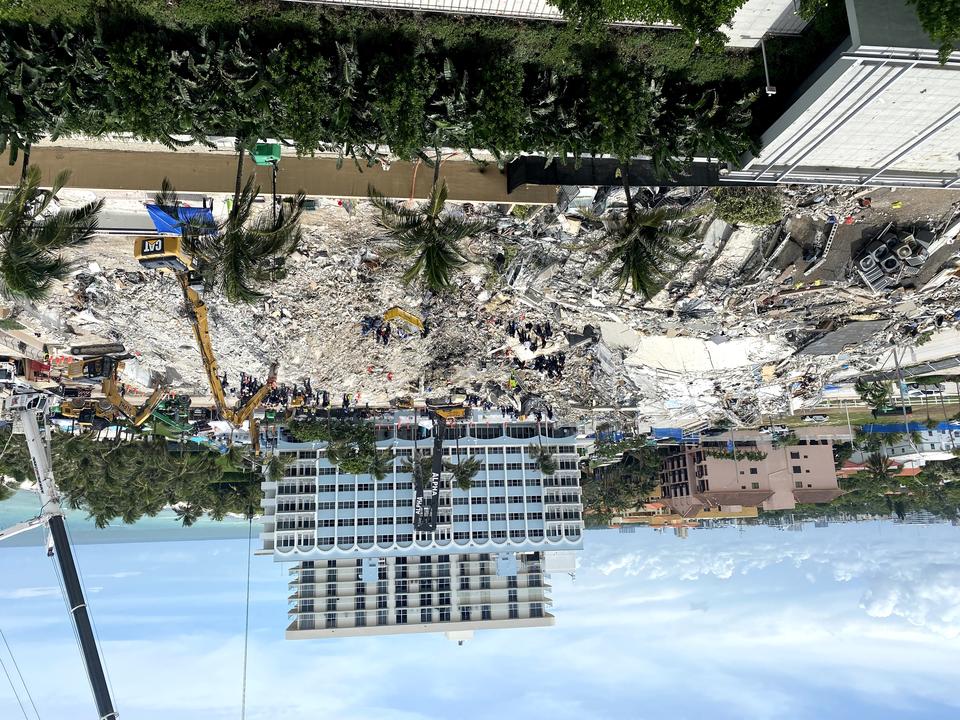
Champlain Towers South was built in 1981 and was undergoing a roof replacement to be in compliance with the report when half the building flattened early in the morning on June 24th. The deadly collapse of the 12-story oceanfront condominium in a small town on the same barrier island as Miami Beach, Fla., is raising concerns among structural engineers and designers about how to prevent future building failures.
So far, At least 18 people have been found dead and 145 people are left unaccounted for. Search and rescue teams continue to race to locate missing individuals.
A hoard of emails and documents released by Surfside revealed that residents and contractors were already raising concerns about the integrity of the building for years — specifically focusing on structural problems and leaks in the garage and pool area.
The engineer, Frank P. Morabito, found “major structural damage” to a concrete slab below the pool deck, caused by a flaw that limited water drainage, according to the 2018 review that outlined the repairs needed for the 40-year recertification. Residents were not told of that report. Officials assured its residents that the structure was safe and “was not in bad shape” despite the report, while also disregarding residents’ concerns that nearby construction might compromise the stability of the beachside high-rise.
On April 13, 2021 the board unanimously voted in favor of a $15 million special assessment to pay for the upgrades to the building, 3 years after the initial; report. Also, as recently as April, the residents of Champlain Towers were divided over the repairs. Dozens signed a letter that questioned the details of the proposed spending and asked the board to consider a lower assessment. The group wrote, “We cannot afford an assessment that doubles the amount of the maintenance dues currently being paid”.
According to experts, unexpected collapses such as this are very rare in the modern history of structural design. Investigators have not determined an immediate explanation for what caused 55 of the 136 units in the northeast corridor of the 12-floor building to crumble, but experts have speculated about structural damage and the possible corrosion of the reinforced concrete building’s foundation or stabilizing rebar.
Minutes before Champlain Towers South came down, a resident across the street noticed that a section of the pool deck and a street-level parking area had collapsed into the parking garage below. Experts have said the collapse appeared to involve a failure at the lowest levels of the building or in the parking garage beneath it.
Morabito Consultants, which performed a structural analysis of the building in 2018 is currently being sued by attorneys for the family of Harold Rosenberg, who remains unaccounted for. They argue that the firm should have examined the building’s stability by “inspecting the subsurface foundation”, and should have submitted a written report to the town of Surfside certifying that the condo was structurally safe. The suit states that “The Morabito report did not certify that the building ‘is structurally and electrically safe…for continued occupancy.’” In addition, Rosenberg’s three adult children testify in the lawsuit that the condo association did not make the necessary structural repairs on the building in order to save money.
Morabito Consultants has said in a statement that it was “working closely with the investigating authorities to understand why the structure failed.”
More than a dozen buildings in unincorporated Miami-Dade are up for recertification and will be even more closely monitored for potential safety concerns. Miami-Dade County Mayor Daniella Levine Cava has stated that those buildings will be a part of a county-wide audit which will also include recently recertified buildings.



